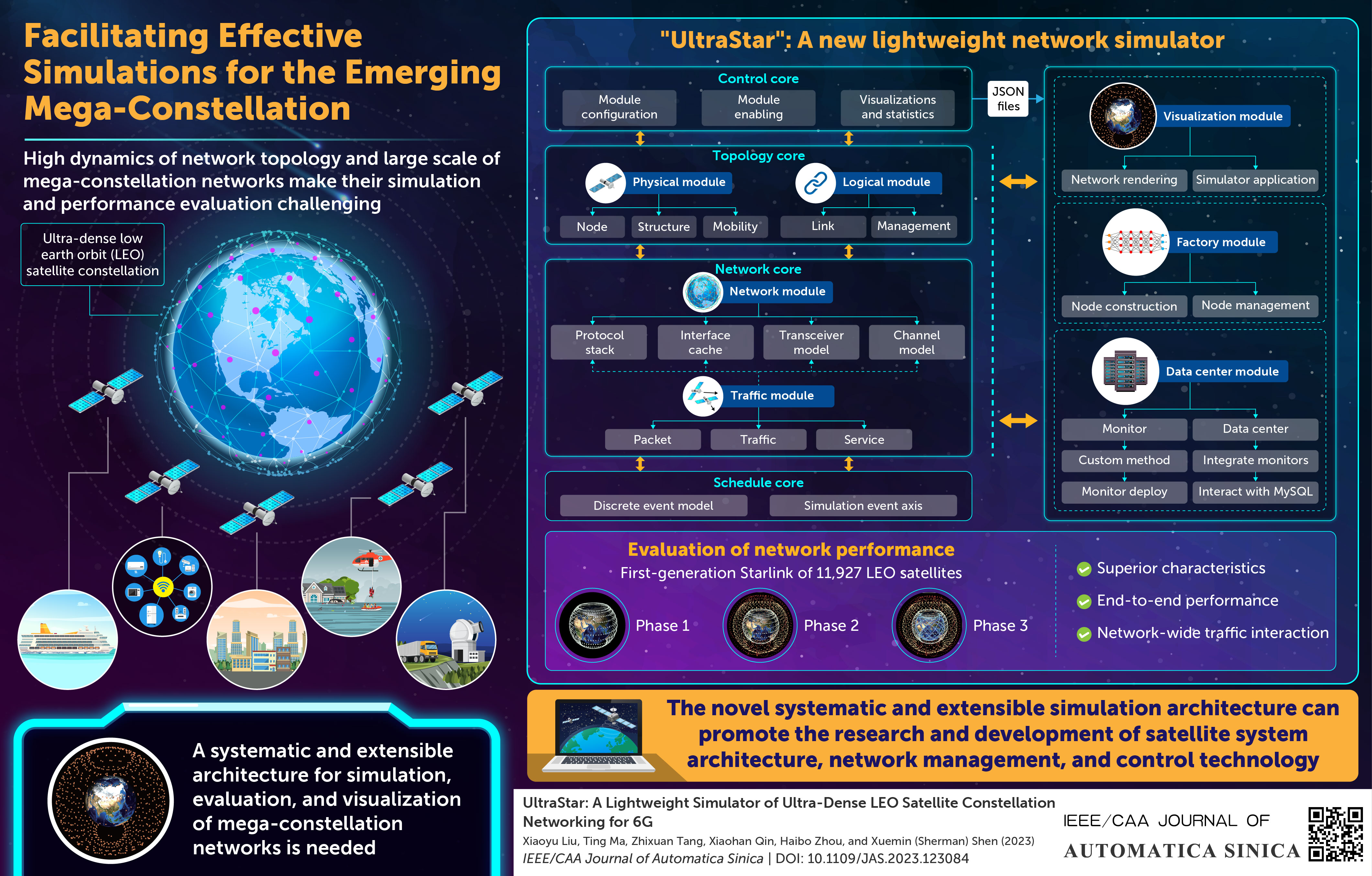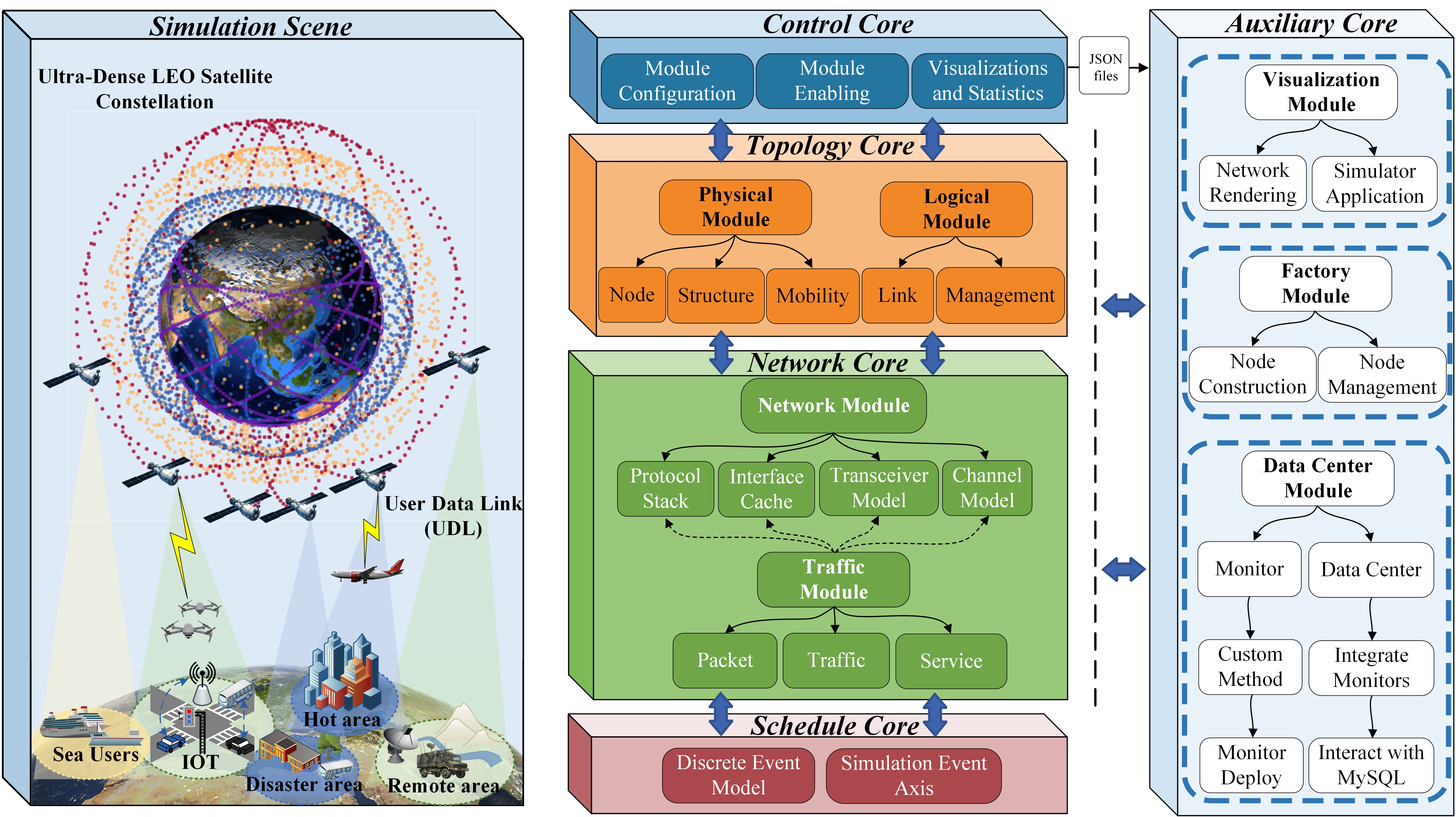The simulator evaluated the network performance of first-generation Starlink of 11,927 low earth orbit satellites, demonstrating superior performance and effectiveness

The mega-constellation satellite networks are gaining a lot of attention because of their potential in facilitating the widespread availability of sixth-generation (6G) wireless communication systems with high-capacity connectivity. They are being seen as the solution to usher in the usage of 6G in the digital age, especially with the development of low earth orbit (LEO) satellite networks by companies such as SpaceX, OneWeb, and Amazon. However, mega-constellations have a complex network topology that makes their simulation difficult and the assessment of their performance challenging. There is thus, an urgent need to develop effective simulation tools to promote the research and development of satellite system architecture, network management, and control technology.
Against this background, a team of researchers from China and Canada, led by Associate Professor Haibo Zhou from the School of Electronic Science and Engineering at Nanjing University, has proposed UltraStar, a lightweight network simulator which aims to facilitate the complicated simulation for the emerging mega-constellation.
----------------------------------------------------------------------------------------------------
Paper Information
X. Y. Liu, T. Ma, Z. X. Tang, X. H. Qin, H. B. Zhou, and X. M. Shen, “UltraStar: A lightweight simulator of ultra-dense LEO satellite constellation networking for 6G,” IEEE/CAA J. Autom. Sinica, vol. 10, no. 3, pp. 632–645, Mar. 2023.
https://www.ieee-jas.net/en/article/doi/10.1109/JAS.2023.123084
----------------------------------------------------------------------------------------------------
“This study proposes a systematic and extensible software architecture, where the joint requirement for software simulation, quantitative evaluation, data statistics, and visualization is fully considered,” highlights Associate Professor Zhou.
The researchers created simplified representations of different real-world components and models related to the networking nodes, structures, and protocol stacks of the constellation. They then initialized the satellite network with the real configuration parameters and updated their trajectories over time through the orbit prediction interface. This two-stage topology maintenance method further accounts for the high dynamics of mega-constellations. Finally, the researchers utilized the discrete event simulation theory to develop a new set of distinct events for basic network processes, including packet processing and discrete movement, which helped maintain the multiple network state changes over time.
Having developed the simulator, the team used it to fully evaluate the network performance of the first-generation Starlink of 11,927 LEO satellites—a SpaceX project announced in 2014—for different deployment stages. They determined the characteristics of the constellation topology, the performance of end-to-end services, and the effects of network-wide traffic interaction.

The results demonstrated the effectiveness of UltraStar in simulating the mega-constellation network besides demonstrating superior performance of Starlink. The simulator supported the design and verification of the topology architecture of mega-constellations as well as their networking protocols.
Associate Professor Zhou, in response to being asked about the long-term implications of the present research, says, “The core ideas in this work will greatly facilitate the simulation work of satellite network researchers and bring inspiration to the field of satellite internet networking protocol research and performance evaluation. UltraStar can provide a highly reliable and high-fidelity simulation environment for the actual development and deployment of mega-constellation networks.”
Furthermore, advances in system architecture, network management, and service provisioning technology will facilitate emerging services with high data rate, low latency, and high reliability, bringing people better service quality. Here’s hoping that the full implementation of the mega-constellation infrastructure brings a new round of information revolution!















 E-mail Alert
E-mail Alert


